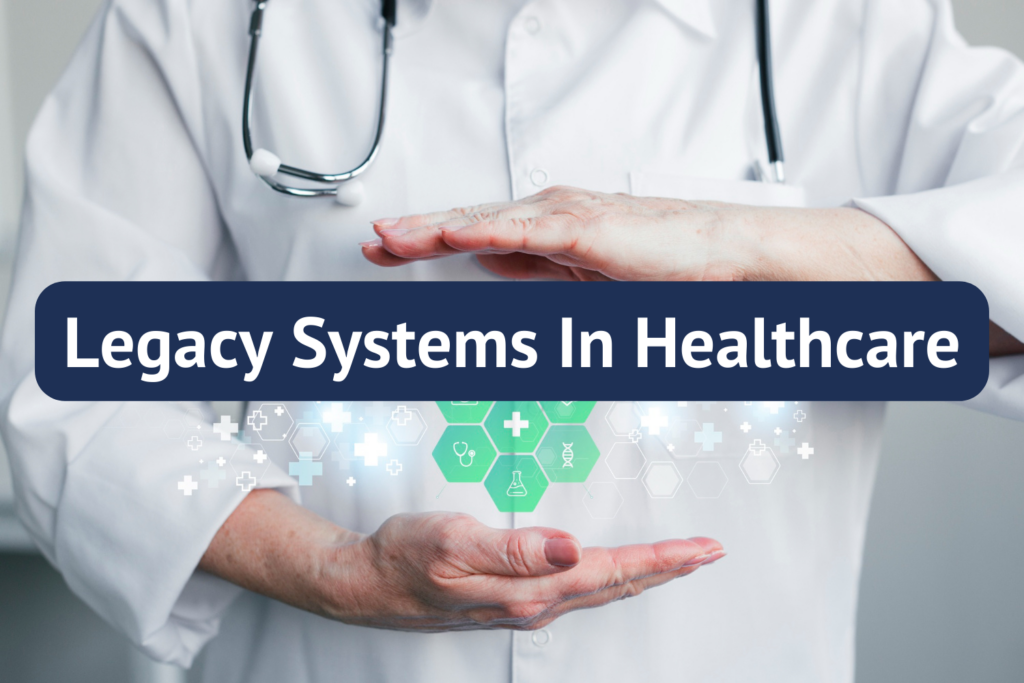
Legacy systems expose the healthcare sector to a unique form of vulnerability. A legacy system is one the manufacturer no longer provides technical support for. If an obsolete physical server or other hardware heritage system incur damage, you might not be able to fix it. This also indicates there won’t be any additional security or performance updates for that program. Devices, operating systems, software, and even processes can all be considered legacy systems. Security flaws discovered in a legacy system won’t be fixed by the manufacturer, and you’ll have to account for them on your own from a security perspective.
As legacy systems in healthcare are extremely risky and susceptible to cyberattacks., they must be properly managed to mitigate risk and provide resilience. According to the HIPAA Security Rule, covered entities and their business partners must accurately and completely analyze any threats to the confidentiality, integrity, and availability of ePHI present in their environment, including ePHI used by legacy systems. A helpful Security Risk Assessment Tool is available on the Department of Health and Human Services (“HHS”) website to help organizations carry out such risk assessments.
With cyberattacks on the rise, organizations must mitigate legacy systems as a security risk by adopting some of the following strategies to ensure compliance:
- Upgrading to a supported version or system
- Contracting with the vendor for extended support
- Migrating to a different system or solution
- Switching to a cloud-based solution
- Removing the legacy system from the internet or network
- Maintaining the legacy system by strengthening existing controls or implementing compensating controls
What Is a Legacy System?
So, what is a legacy system in healthcare? We’re talking about any specific older clinical system that might be replaced with newer technology, typically because it doesn’t fulfill the organization’s needs. A homemade software product that has been in use for many years in a hospital may not send data to other systems or may need workarounds or software patches to continue ongoing operations. We need to replace our outdated registration system with one that integrates with the rest of our organization, a project team might declare during a meeting.
What are the drawbacks of using legacy systems in healthcare?
Legacy systems continue to be a major issue in the healthcare industry, as they have one of the largest legacy system footprints. This persists for a few reasons:
1) Problems with integration: Many healthcare organizations lack the resources to upgrade all outdated systems at once. As a result, businesses have trouble acquiring new systems and merging them with outdated ones. For this reason, they frequently decide to stick with their outdated methods.
2) Non-disruptive operations: Due to busy schedules or the nature of their procedures, many doctors require as little downtime as possible. With concern regarding unneeded downtime, many healthcare organizations are reluctant to consider deploying a new system, even when doing so would be advantageous.
3) Costs: According to a HIMSS survey conducted in 2021, 73% of healthcare organizations continue to use legacy systems, which are expensive to maintain. For any firm, purchasing and implementing new technology is very expensive. When you must purchase numerous systems to ensure compatibility and minimal downtime, budgeting money can be particularly challenging.
4) Employee education and training: It will take time to teach staff members how to utilize the new systems, which could disrupt crucial processes and jeopardize patient care.
What Are The Challenges of Healthcare Legacy Systems Replacement?
The choice to upgrade outmoded healthcare software demands careful preparation and presents some difficulties, much like any system-wide endeavor:
- While a technology supplier assists you in transitioning from outdated healthcare systems to new software, you must stop (or at least disrupt) your regular activities.
- It will take some time for your personnel to get proficient with the new equipment.
- It’s possible there will be bugs that need to be worked out over time.
Although these drawbacks can appear alarming, they can be reduced with careful design and execution. The advantages you receive, however, completely outweigh them. The capacity to create a centralized Electronic Health Records (EHR) system, gather patient data, and make it easy for other medical facilities to readily exchange information, will assure a positive patient experience and optimize your costs.
Besides, the alternative of a system failure or cyberattack is much more costly.
Triyam provides data management services and solutions that empower healthcare organizations to decommission legacy EHRs, extract patient data, and archive it in a Best in KLAS-winning secure cloud.
